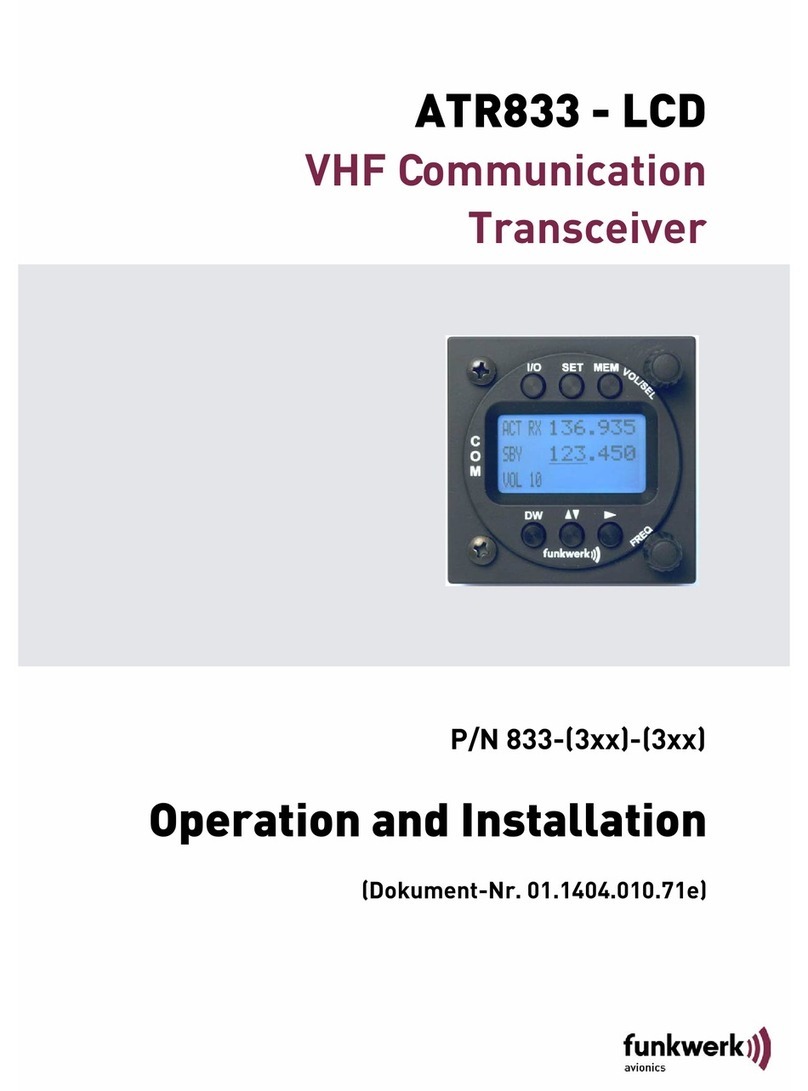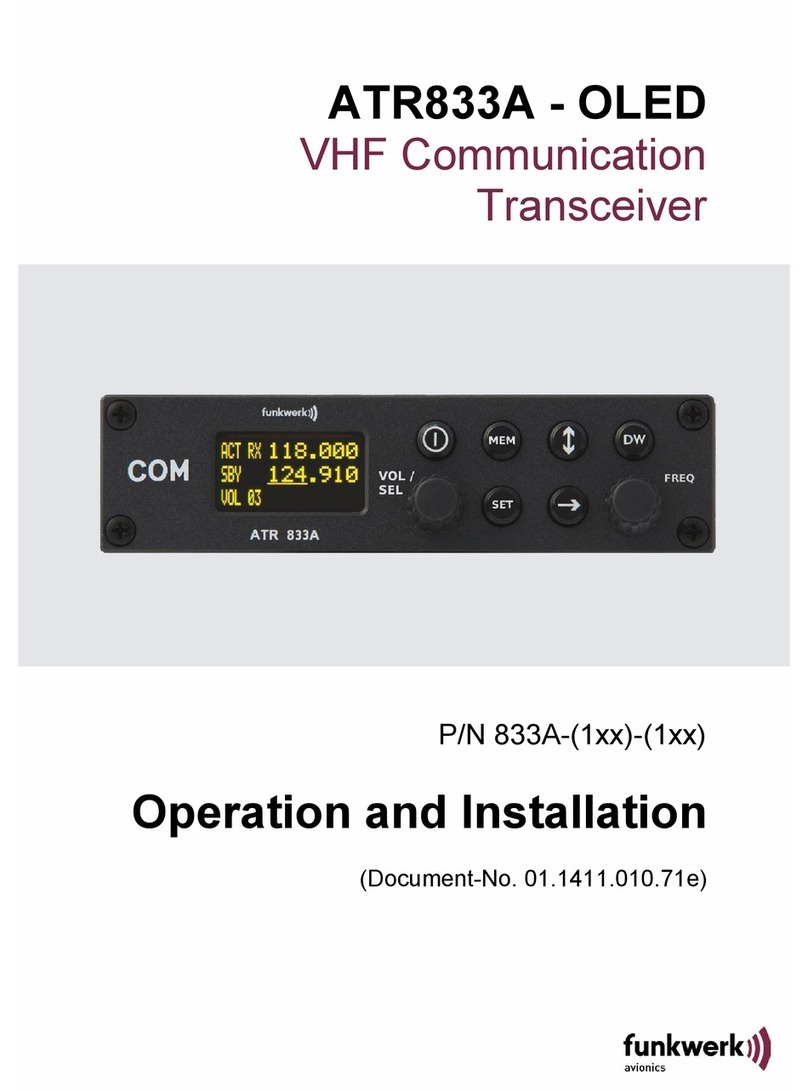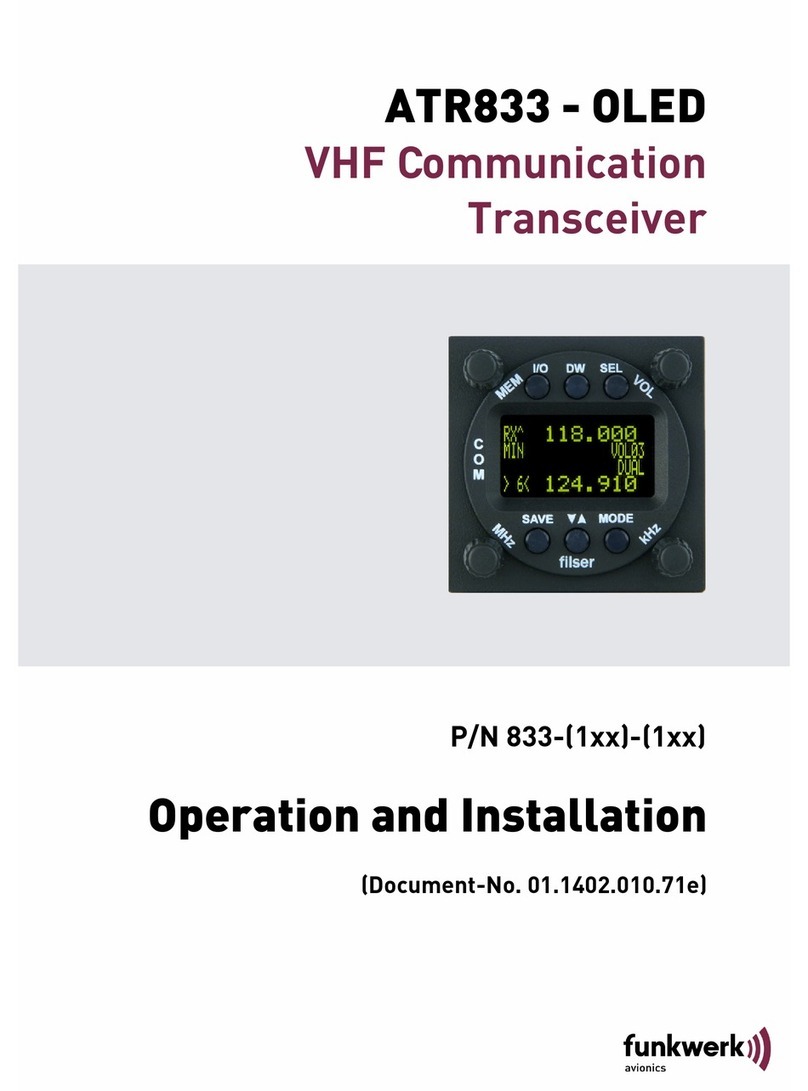
ATR500 / P/N 500-(0XX)-(0XX) / 500-(1XX)-(1XX)
Operation and Installation
3Dokument-Nr.: 01.1251.010.71e / Revision: 2.01
INHALT
1General ..............................................................................................5
1.1 Symbols ...................................................................................5
1.2 Abbreviations ...........................................................................5
1.3 Customer Support ....................................................................6
1.4 Features ...................................................................................6
2Operation ...........................................................................................7
2.1 Controls....................................................................................7
2.2 ON/OFF....................................................................................9
2.3 Display .....................................................................................9
2.4 Basic Settings ........................................................................12
2.4.1 VOL – Volume .............................................................12
2.4.2 SQ – Squelch ..............................................................12
2.4.3 VOX – Voice Detection (Threshold of IC-Function).....12
2.4.4 DIM – Background Illumination....................................13
2.4.5 CON – Contrast...........................................................13
2.5 Frequency Settings ................................................................14
2.5.1 Manual Input................................................................14
2.5.2 Select frequency from memory position ......................14
2.5.3 Save a new frequency.................................................14
2.6 Transmission..........................................................................15
2.7 Reception ...............................................................................15
2.8 Enhanced Settings .................................................................16
2.8.1 INIT – Menu.................................................................16
2.8.2 Return Mode – Menu...................................................18
2.9 Deviations in other variants....................................................19
3Installation ........................................................................................20
3.1 Advices...................................................................................20
3.2 Telecommunication Data .......................................................20
3.3 Scope of Delivery ...................................................................20
3.4 Unpacking and Inspecting of the Equipment..........................21
3.5 Mounting ................................................................................21
3.6 Equipment Connections .........................................................22






























